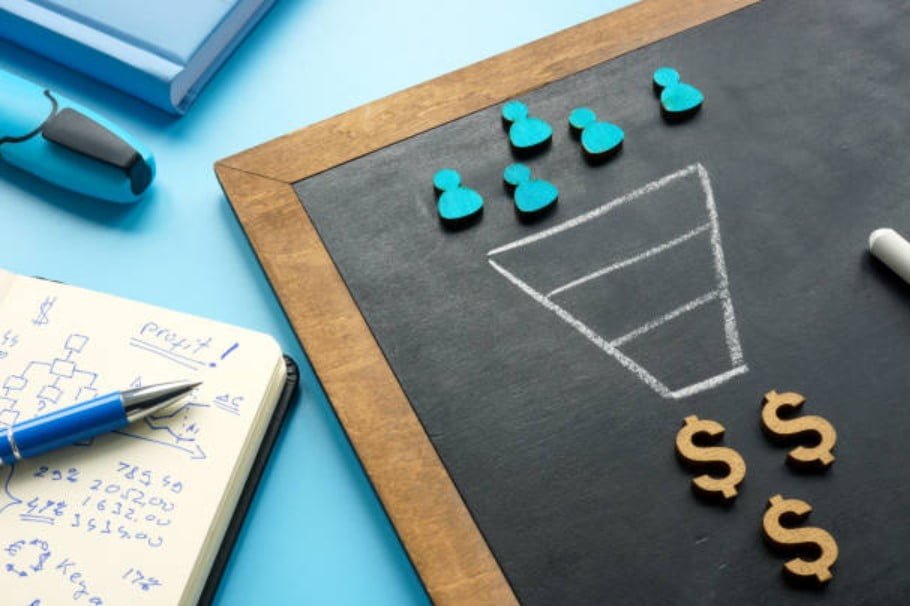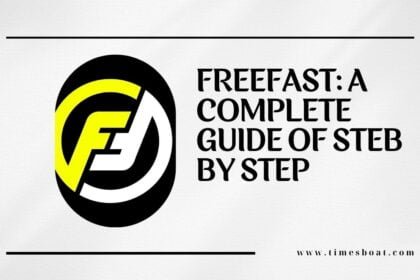A sales funnel, which is shaped after a funnel and shows how a large number of prospects becomes a small number of real customers, informs your team about your company’s sales strategy.
A Sales Funnel: What Is It?
Visualizing your customer’s path with a chart is called a sales funnel. A sales funnel may aid in the education and training of your sales force as well as in understanding your offering and the sales process from the viewpoint of your target market.
A Sales Funnel’s Fundamental Structure
Any sales funnel’s fundamental design consists of three primary levels: the top, bottom, and middle. Sublevels are often included at each level.

The funnel’s top
Every sales funnel starts with awareness, which is the initial phase in which prospective clients must learn about your offering. The largest portion of the funnel is at the top since it houses the vast majority of prospective buyers that you will reach with advertising to spread the word about your product.
In order to convert them into leads at this point, you start by conducting research on your potential clients. After that, you target them with emails, cold calls, content marketing, and online advertisements.
The following phase, interest, which is starting to chase leads who may have had some sort of interaction with your brand or product, will also be included in the top column or service, but they haven’t decided if they want it yet. This may be accomplished by offering product trials and service proposals, as well as by nurturing your leads with follow-up calls and more focused marketing.

The Funnel’s Midsection
When you start submitting quotations or proposals to your potential client and haggling over conditions, you move into the decision stage of the relationship. By now, your potential customer has determined that they enjoy your offering, but they still need to decide whether or not to make a formal purchase.
This might be a big or minor portion of the funnel, depending on your company. From knowledge to purchase, it could happen quickly, or you might need to follow up on leads in order to close a bigger deal.
At the base of the chute
As you are “closing the deal” with your new customer, you finally reach the action stage. Your potential consumers are making decisions at this point, so you need to stand out from the competition by demonstrating your worth and earning their confidence.
This can take a variety of shapes, based on how the goods are distributed. Are you offering them as part of a subscription platform, or is it just one item or service? In any case, at this point there are pay transactions and onboarding.
Certain funnels may include extra bottom-of-the-funnel steps after purchase, depending on your type of business, with the goal of fostering repeat business and client loyalty. Keeping customers satisfied after a purchase is the goal of this stage in order to create enduring, devoted connections with your clients.
Advantages of a Sales Channel
All industries combined have an average conversion rate of 3.9%; B2B technology has the lowest rate at 1.7%, while professional services have the highest average at 9.3%.
A well-designed sales funnel facilitates strategic planning and narrows the focus of your team’s attention to leads that have the highest conversion rates. This boosts output, facilitates forecasting and insights, and enhances interactions with customers.
Elevated Efficiency
By improving your understanding of your ideal client and helping you answer their requirements more effectively, a sales funnel may help you as well as your team become more productive. By doing this, time that would be lost looking for unqualified leads is saved.
Forecasting and insights made easier
You will be able to forecast sales success and gain better insight into the development of your service or goods by identifying the needs and desires of your prospects and what qualifies them as leads. You and your sales staff will be able to obtain important insights by using a sales funnel maker for your potential clientele as they pass through the various stages of the funnel.
Better Customer Relations
Sales funnels can also enable you to see leads that are not progressing to the next level of the funnel, which will assist you comprehend the demands of prospective clients you may be passing over.
Funnel for Brokerage Sales
A brokerage is a company that represents several suppliers of goods or services and acts as a “broker” for clients. A brokerage sales funnel works similarly to the more conventional sales funnel, with the first step being marketing to increase brand recognition.
Next, interest is gauged by educating clients and nurturing prospects. The third step of the funnel, which is when it somewhat deviates from a fundamental form, is crucial for brokerages. Brokers can provide a sales quotation together with a summary of the many alternatives available when clients ask for prices. The client ultimately decides what to buy.

Business Sales Funnel
Selling goods to bigger, enterprise-sized businesses is known as enterprise sales. Due to the size of the sales, these organizations’ funnels only slightly alter in appearance since more relationship-building is required with each potential client.
Sales representatives will provide a demo and make a sales presentation after determining whether leads are genuinely qualified to buy the good or service. Once the client agrees, sales representatives can proceed with offers or sample services prior to finalizing the agreement.
Sales Funnel for B2B Consulting
Similar to the majority of other funnels, the B2B marketing funnel places a little more emphasis on the interest stage, when sales representatives spend time explaining to potential clients how the products or services may best help their own company. After that, representatives will draft a proposal that the potential buyer may review and discuss before deciding to buy.
Sales funnels for email marketing and social media
A sales funnel (https://ocw.mit.edu/courses/15-387-entrepreneurial-sales-spring-2015/) may help a company selling via social media or email marketing, even though these channels often involve more easier sales than brokerage, B2B, SaaS, and enterprise-level sales online.
The same AIDA phases are strategically used in this social media funnel of sales to attract clients to a product. Targeting postings on social media platforms increases visibility; contacting prospects who have registered to your list sparks interest; holding an online conference aids in decision-making; and, lastly, presenting your goods to clients encourages action.






